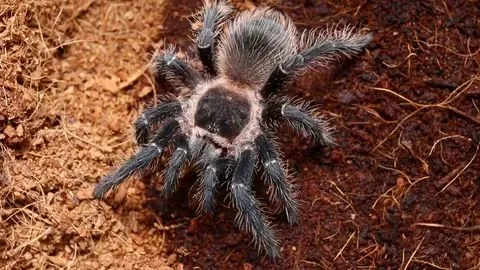Tarantula Spiders Are They Dangerous Top 5 Facts
Tarantulas are often viewed with a mixture of fear and fascination. These large, hairy spiders, with their imposing size and sometimes intimidating appearance, have captured the imaginations of many. But are tarantulas truly dangerous? This article delves into the top 5 facts about tarantulas, exploring their venom, behavior, and the realities behind common misconceptions. This will help you better understand these fascinating creatures and determine if you should be worried.
Fact 1 Size and Appearance
The physical attributes of a tarantula are a significant factor in how they are perceived. Their size alone can be alarming, leading to the assumption that they are dangerous. These spiders are among the largest in the world, with some species having a leg span that can exceed 10 inches. Their appearance, characterized by a hairy body and large fangs, can be quite intimidating. However, it is essential to understand that while their size and looks can be frightening, they do not necessarily equate to high danger.
The imposing size

The imposing size of tarantulas is one of their most defining characteristics. Their size is a direct result of their slow metabolism and extended lifespans. Female tarantulas, in particular, can live for decades, allowing them to grow to impressive sizes. This imposing size, however, primarily serves purposes such as hunting and mating. The sheer size of a tarantula does not correlate with increased aggression or venom potency.
Distinctive features
In addition to size, tarantulas have distinctive features that contribute to their appearance. Their bodies are covered in hair, which varies in color and density depending on the species. Their large fangs, used to inject venom into prey, are another noticeable feature. Although these characteristics might seem scary, they are primarily adaptations for survival in their natural habitats. The hairy exterior and fangs are tools for survival, not necessarily indicators of dangerousness toward humans.
Fact 2 Venom and Bites
Many people fear tarantulas because of their venom, but it’s important to understand the nature of tarantula venom and the impact of their bites. Tarantula venom is primarily used to immobilize prey, such as insects, small rodents, and birds. Although it can be painful, it is generally not life-threatening to humans. Understanding the venom’s composition and effects provides a realistic view of the potential danger.
The potency of tarantula venom

Tarantula venom is not as potent as many people think. It is primarily designed to subdue their prey. The venom contains neurotoxins that can cause muscle spasms, pain, and temporary paralysis in their prey. However, in humans, the effects are typically mild. Most bites result in localized pain, swelling, and redness, similar to a bee sting. The potency varies slightly among different species, but the overall threat is relatively low.
How tarantula bites affect humans
When a tarantula bites a human, the venom’s effects are usually localized and non-lethal. The symptoms often include immediate pain, similar to a bee sting, and some swelling and redness around the bite area. In rare cases, more severe reactions can occur, particularly if the person is allergic or the bite becomes infected. These severe reactions, however, are not directly due to the venom’s potency but rather the body’s response to it or secondary infections. Proper care includes cleaning the bite and monitoring for any unusual symptoms.
Fact 3 Defensive Mechanisms
Tarantulas have evolved several defensive mechanisms to protect themselves from predators. These mechanisms are crucial for their survival in the wild. Understanding these defenses helps clarify how tarantulas interact with their environment and humans. They are not inherently aggressive but use these defenses when threatened.
Urticating hairs

Many tarantula species have urticating hairs on their abdomen. When threatened, they flick these hairs towards potential threats. These hairs are barbed and can cause skin irritation, itching, and sometimes respiratory problems if inhaled. This defense mechanism is more of an irritant than a direct threat, but it is effective in deterring predators. The use of urticating hairs shows the spider’s preference to avoid confrontation.
Fangs
Tarantulas use their fangs as a last resort defense. Their fangs, while large, are primarily for injecting venom into prey. Tarantulas will only bite if they feel directly threatened. A bite can be painful, but the venom is typically not highly toxic to humans. This behavior is defensive, with tarantulas preferring to flee or use other methods like urticating hairs before biting.
Fact 4 Habitat and Behavior
The habitat and behavior of tarantulas influence the level of danger they pose. Their environment shapes their temperament and how they interact with humans. Understanding the conditions in which they thrive, and their typical behaviors, gives insight into whether they are dangerous. It is important to know their natural instincts before making any assumptions.
The role of habitat in danger

Tarantulas inhabit various habitats, from tropical rainforests to deserts. The habitat they live in influences their behavior. Tarantulas in environments with more threats may be more defensive. The availability of food and shelter also impacts their behavior. Generally, tarantulas are not aggressive and prefer to avoid conflict, making their habitat a determining factor in their behavior.
Defensive behaviors of tarantulas
Tarantulas exhibit several defensive behaviors. They usually try to escape threats. When cornered, they may raise their front legs, display their fangs, or flick urticating hairs. Biting is often a last resort. These behaviors are protective responses designed to minimize danger, rather than acts of aggression. Their natural instinct is to survive by any means possible.
Fact 5 Common Myths and Misconceptions
Many myths and misconceptions surround tarantulas, often portraying them as highly dangerous creatures. These myths frequently inflate the risks associated with tarantulas. Separating fact from fiction provides a more accurate view of these spiders and their interactions with humans. The truth is often less dramatic and far less dangerous than the myths suggest.
Debunking myths about tarantula danger

One common myth is that tarantulas are highly aggressive and attack humans. This is untrue; tarantulas are generally docile and prefer to avoid confrontation. Another myth is that their venom is deadly. While their venom can cause pain, it is not usually life-threatening to humans. Debunking these myths offers a clearer understanding of tarantulas and reduces unwarranted fear.
The reality of tarantula behavior
The reality is that tarantulas are not inherently dangerous. They are more likely to run away from a perceived threat than attack. Their behavior is primarily driven by survival instincts. Understanding their behavior can make it clear that they are more likely to be cautious rather than aggressive. Knowing the truth allows one to approach these creatures with a more informed and less fearful perspective.
In conclusion, while tarantulas may appear intimidating, they are generally not highly dangerous to humans. Their venom is not very potent, and they are more likely to use defensive mechanisms like urticating hairs or flee than bite. Understanding their habitat, behavior, and dispelling common myths can help people appreciate these fascinating creatures more and reduce the fear surrounding them.
